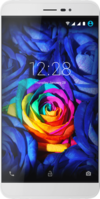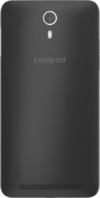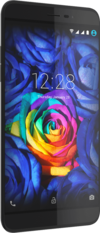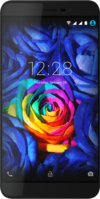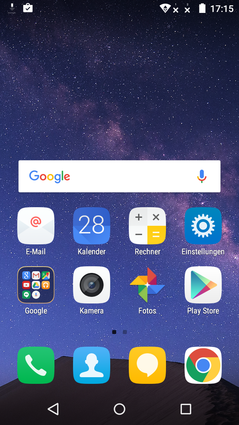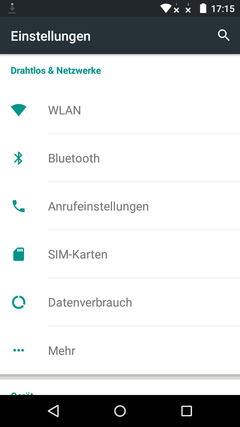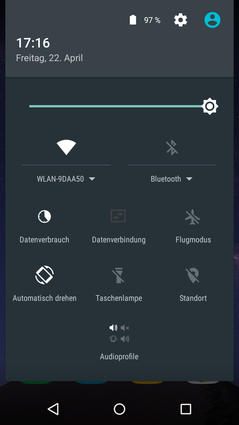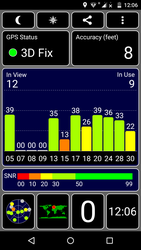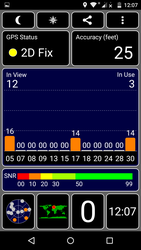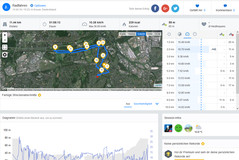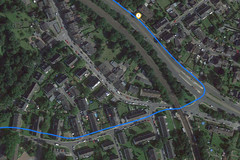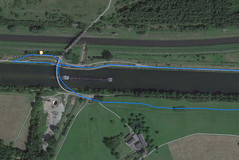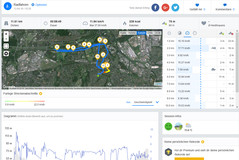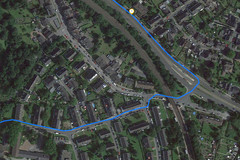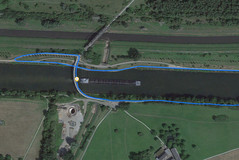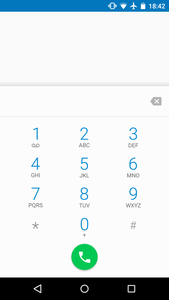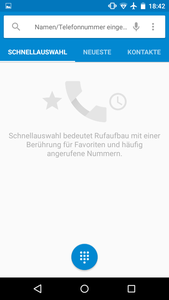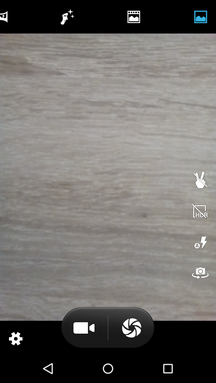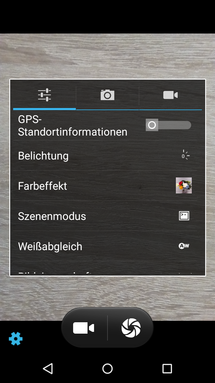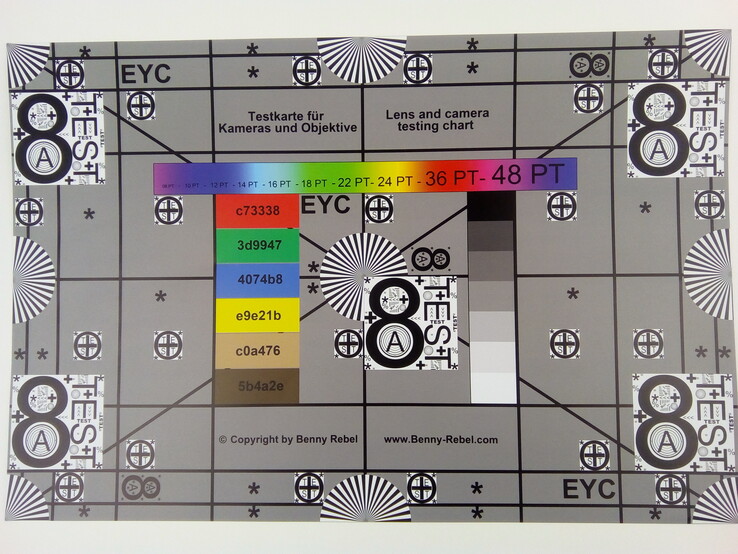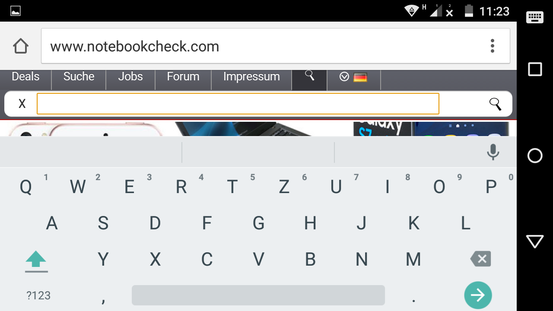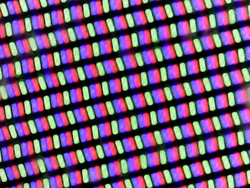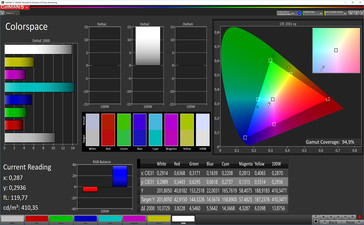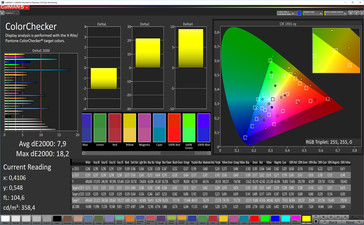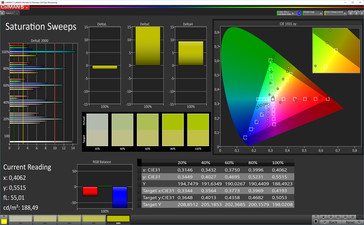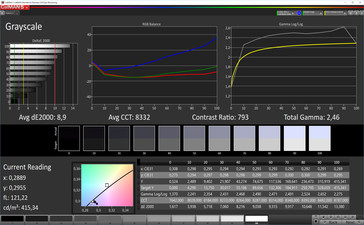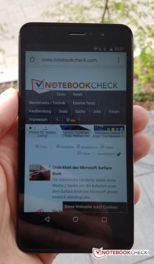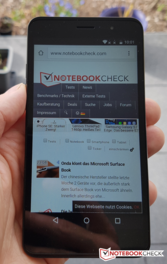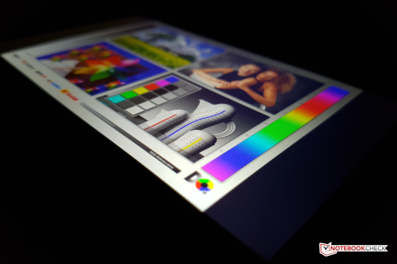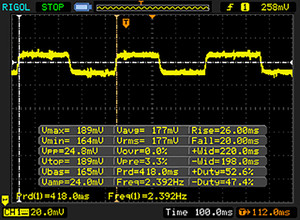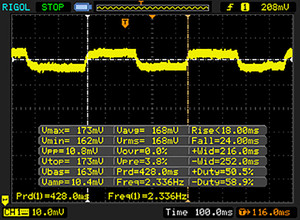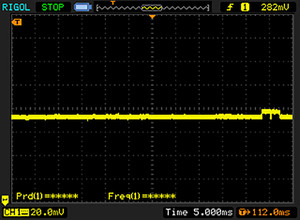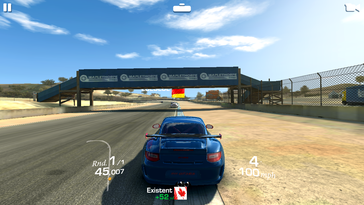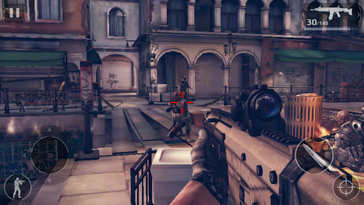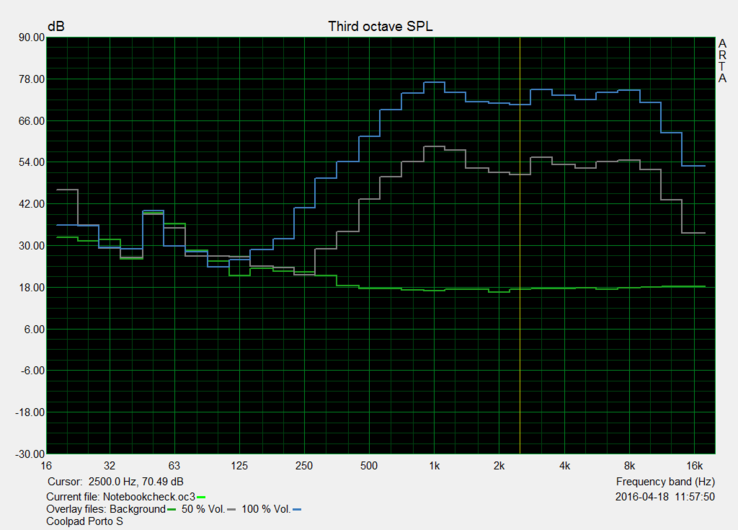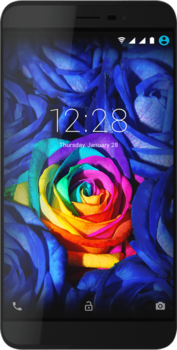Coolpad Porto S Smartphone Review
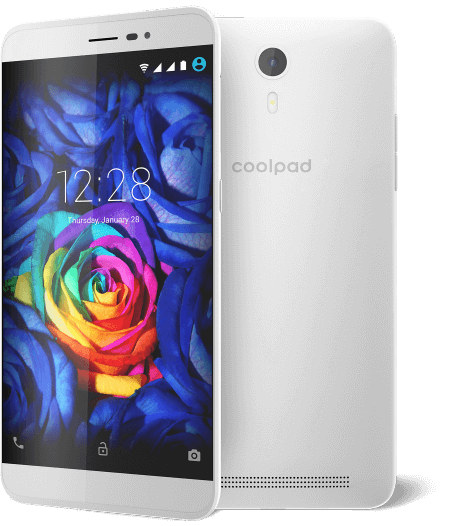
For the original German review, see here.
Following Coolpad's Modena, we now have another handset by the Chinese manufacturer Coolpad in review in the form of the Porto S. The LTE smartphone introduced in January this year has a 5-inch IPS HD screen with a resolution of 1280x720 pixels. A 64-bit quad-core processor by Mediatek, supported by an ARM Mali-T720 GPU and 1 GB working memory, powers Coolpad's Porto S. The Porto S is also configured with an 8 GB internal storage besides the non-removable 2000 mAh battery. The storage can be expanded by up to 64 GB via micro-SDXC card when required. In addition to the storage expansion, the hybrid slot serves as a slot for a second nano-SIM card.
The entry-level smartphone is available in dark-gray and white at a recommended price of 129 Euros (~$146) on the German market. The list of potential rivals is long in this price range. We use the rates of ZTE's Blade A452, Oukitel's K4000 Pro, LG's G4c and Microsoft's latest Lumia 550 entry-level handset for comparison in this test.
Case
At 143 x 72 millimeters, Coolpad's 5-inch Porto S is relatively compact. Its weight of just 125 grams and its height of 7.6 millimeters contribute to decent handling. The screen is installed flush in the plastic casing. The materials selected for the Porto S make an overall good impression for this price range.
The edges around the screen are fairly wide in the entry-level handset - the black bars between the screen and display bezel are noticed unfavorably particularly in the white model. This is also reflected in the comparatively bad screen-surface ratio of 66.9% - that is only on par with an iPhone 6s.
The back cover cannot be removed. The slots for both cards are on the right under the power button. The latter and the two buttons for volume control on the left have a decent pressure point but wobble a bit. The casing's stiffness does not give reason for complaint. The handset defies both pressure and warping attempts.
Connectivity
As common in this price range, the internal eMMC storage (ROM) has a capacity of only 8 GB. The user only has about 4.2 GB of that available in delivery state. Although it can be expanded by up to 64 GB via micro-SDXC card, applications cannot be moved to the external storage (APP2SD). Coolpad has disabled this feature in the Porto S. The micro-USB 2.0 port on the lower edge only serves for recharging; it does not support OTG.
Software
The now over one-year-old Android 5.1 Lollipop operating system is preloaded on the Porto S. Its looks have been modified with the proprietary Cool UI launcher. Coolpad has not yet named a time frame for updating to the latest Android version 6 Marshmallow.
Cool UI version 8.0 is clearly based on Google's stock Android Interface - at least in the setting menus. Like other Chinese manufacturers, Coolpad does not use an app drawer. However, it is possible to create folders. In addition to proprietary applications, such as calendar or gallery, no bloatware is preloaded. Only Google's services are additionally installed. Some software features known from Coolpad's Modena (e.g. gesture control), are not present in the Porto S.
Communication & GPS
Coolpad incorporates two slots for two SIM cards (micro and nano-SIM) in the Porto S. The handset connects to mobile Internet via LTE Cat. 4, which theoretically enables a maximum speed of 150 MBit/s (download) and 50 MBit/s (upload). Consequently, all relevant German frequency bands are covered. Transferring data via the nano-SIM is limited to GSM networks. The reception quality in a big city was good.
The entry-level handset connects to Wi-Fi via the 802.11 b/g/n standards. The reception is still satisfactory even at larger distances to the Wi-Fi router. The somewhat outdated Bluetooth version 4.0 is present for wireless connections with end devices. An NFC chip and Wi-Fi Direct are not part of the configuration.
The Porto S can be located via A-GPS and the global satellite navigation system GLONASS. We tested the GPS module's satellite connection performance via the GPS Test app. Outdoor tracking was quite fast with an accuracy of up to 8 feet (approx. 2.5 meters). The accuracy dropped to 25 feet (approx. 8.5 meters) indoors. We also tested the entry-level smartphone on an almost 11.6-kilometer route and compared the outcomes with Garmin's Edge 500 navigation device. The smartphone's performance is overall good for the price range. The devices only present a difference of 150 meters over the total route. Thus, our review sample is on par with current premium-range devices, such as Huawei's P9.
Telephone & Call Quality
The voice quality during calls and video chats via the front camera is compelling. The contacts are well-intelligible; static noise or interruptions were not noticed in our review sample. Coolpad uses Google's application in Android 5.1 style for the phone app. The layout of the application's user interface is clearly arranged and tidy.
Cameras
In addition to HDR and Live Photo mode, the camera app of Coolpad's Porto S offers some settings options, such as Beauty and Smile mode or a picture-in-picture feature.
The BSI sensor of the rear-facing camera has a resolution of 8 megapixels (3264x2448 pixels). The aperture of f/2.4 leads to bright pictures that, however, suffer under visible image noise in our review sample. The quality is nevertheless still very good for an entry-level smartphone. The sharpness (test chart) and color reproduction are decent. High-detail and high-contrast photos are made in good light conditions (scene 1, surroundings). The auto-focus finds its limits in low light, and the photos display visible blurriness (scene 2, indoors). The release times in the test were comparatively slow in our opinion.
The front-facing camera is also furnished with a BSI sensor and f/2.4 aperture. The quality of the 2 MP camera lacking auto-focus is good, but the photos show weaknesses in sharpness reproduction. Videos can be recorded in 720p at 30 FPS with both the front and primary cameras.
Accessories & Warranty
The included accessories are made up of a headset, USB cable and modular power supply. Beyond that, the Porto S comes with an instruction manual and warranty card.
Coolpad includes a 24-month warranty on its product.
Input Devices & Handling
The capacitive touchscreen in the entry-level handset identifies up to 5 fingers simultaneously and offers good gliding traits. Inputs were implemented quickly and accurately. Google's stock virtual keyboard is preloaded ex-factory. The key layout is quite basic and clearly arranged. When preferred, other keyboard layouts are available via third-party suppliers in the Play Store.
Display
The 5-inch LC display in Coolpad's Porto S has a resolution of 1280x720 pixels, which equals a pixel density of 294 PPI. It is thus on par with the comparison handsets that also feature an HD resolution. The pixel density of the Porto S is theoretically below the "magic" mark of 300 PPI, but small fonts in text content still look sharp.
Although the measured maximum brightness of 418 cd/m² is average, it proves sufficient in routine use. An identical maximum brightness of 410 cd/m² in the image center (black level 0.5 cd/m²) results in the realistic APL50 test (average picture level) where dark and bright areas are distributed evenly. The screen in the Porto S achieves a rate of 401 cd/m² when the adaptive ambient light sensor for controlling the screen's brightness is enabled. The illumination of 92% is very homogeneous.
| |||||||||||||||||||||||||
Brightness Distribution: 92 %
Center on Battery: 407 cd/m²
Contrast: 814:1 (Black: 0.5 cd/m²)
ΔE ColorChecker Calman: 7.9 | ∀{0.5-29.43 Ø4.78}
ΔE Greyscale Calman: 8.9 | ∀{0.09-98 Ø5}
Gamma: 2.46
CCT: 8332 K
| Coolpad Porto S Mali-T720, MT6735, 8 GB eMMC Flash | Oukitel K4000 Pro , MT6735, 16 GB eMMC Flash | ZTE Blade A452 Mali-T720, MT6735, 8 GB eMMC Flash | LG G4c Adreno 306, 410 MSM8916, 8 GB eMMC Flash | Microsoft Lumia 550 Adreno 304, 210 MSM8909, 8 GB eMMC Flash | Samsung Galaxy S7 Mali-T880 MP12, Exynos 8890, 32 GB UFS 2.0 Flash | |
|---|---|---|---|---|---|---|
| Screen | 6% | 2% | 11% | 15% | 36% | |
| Brightness middle (cd/m²) | 407 | 360 -12% | 446 10% | 480 18% | 536 32% | 350 -14% |
| Brightness (cd/m²) | 403 | 367 -9% | 411 2% | 464 15% | 535 33% | 351 -13% |
| Brightness Distribution (%) | 92 | 89 -3% | 83 -10% | 92 0% | 95 3% | 98 7% |
| Black Level * (cd/m²) | 0.5 | 0.36 28% | 0.65 -30% | 0.49 2% | 0.62 -24% | |
| Contrast (:1) | 814 | 1000 23% | 686 -16% | 980 20% | 865 6% | |
| Colorchecker dE 2000 * | 7.9 | 9.01 -14% | 6.29 20% | 8.13 -3% | 5.81 26% | 2.04 74% |
| Colorchecker dE 2000 max. * | 18.2 | 12.58 31% | 12.3 32% | 3.25 82% | ||
| Greyscale dE 2000 * | 8.9 | 8.67 3% | 5.58 37% | 6.73 24% | 7.72 13% | 1.63 82% |
| Gamma | 2.46 89% | 2.66 83% | 2.04 108% | 2.69 82% | 2.18 101% | 2.07 106% |
| CCT | 8332 78% | 7641 85% | 7636 85% | 7727 84% | 8701 75% | 6391 102% |
| Color Space (Percent of sRGB) (%) | 70.038 | 99.35 | ||||
| Color Space (Percent of AdobeRGB 1998) (%) | 86.86 |
* ... smaller is better
The black level of 0.5 cd/m² and determined contrast of 814:1 places the IPS panel on a good level. However, the Porto S presents weaknesses in color reproduction. The DeltaE shift of 7.9 (mixed colors) and 8.9 (grayscale levels) is above average. The gamma rate of 2.46 is also slightly increased (target rage: >2.2). Although the black level benefits from this, the visible shading decreases. Subjectively, the LC display's color reproduction slightly resembles an AMOLED panel, such as in Samsung's devices. The color temperature of 8332 K is clearly higher than the standard rate (6500 K), making colors look colder than in the original. The very visible bluish tint in the grayscale levels of the screen was not annoying in routine use.
Thanks to the IPS panel, the liquid crystal display presents very stable viewing angles. Colors do not deviate even in extreme viewing angles, but the screen darkens a bit. The smartphone is very impressive outdoors in bright ambient light and always remains sufficiently legible. The low-reflection screen can even cope with direct sunlight without creating significant reflections.
Display Response Times
| ↔ Response Time Black to White | ||
|---|---|---|
| 46 ms ... rise ↗ and fall ↘ combined | ↗ 26 ms rise | |
| ↘ 20 ms fall | ||
| The screen shows slow response rates in our tests and will be unsatisfactory for gamers. In comparison, all tested devices range from 0.1 (minimum) to 240 (maximum) ms. » 99 % of all devices are better. This means that the measured response time is worse than the average of all tested devices (20.2 ms). | ||
| ↔ Response Time 50% Grey to 80% Grey | ||
| 42 ms ... rise ↗ and fall ↘ combined | ↗ 18 ms rise | |
| ↘ 24 ms fall | ||
| The screen shows slow response rates in our tests and will be unsatisfactory for gamers. In comparison, all tested devices range from 0.165 (minimum) to 636 (maximum) ms. » 66 % of all devices are better. This means that the measured response time is worse than the average of all tested devices (31.6 ms). | ||
Screen Flickering / PWM (Pulse-Width Modulation)
| Screen flickering / PWM not detected | |||
In comparison: 53 % of all tested devices do not use PWM to dim the display. If PWM was detected, an average of 8101 (minimum: 5 - maximum: 343500) Hz was measured. | |||
Performance
Unlike its other smartphones, Coolpad does not rely on CPUs by Qualcomm, but rather a Mediatek processor for the Porto S. The MT6735 is a mid-range ARM SoC (system on a chip) from 2014. It is built in 28 nanometers and has four 64-bit capable Cortex A53 CPU cores.
The quad-core processor can fall back on 1 GB of working memory, which results in a relatively smooth system performance in practice. System lags and stutters are primarily noticed during multitasking. As expected, the benchmarks present a similar performance as comparison devices based on the same SoC (MT6735). Only LG's G4c with Qualcomm's Snapdragon 410 is a bit stronger. The browser performance of the Porto S using the preloaded Google Chrome browser is not the fastest, but it is still satisfactory. Website content is loaded with a bit of delay.
The flash memory's speed is fast for the price range. Only Oukitel's K4000 Pro can keep up in the comparison field. However, massive differences are seen when comparing the access times of our review sample with those of our benchmark reference Samsung Galaxy S7, which is particularly evident when opening and closing apps.
| AnTuTu v6 - Total Score (sort by value) | |
| Coolpad Porto S | |
| Oukitel K4000 Pro | |
| ZTE Blade A452 | |
| Microsoft Lumia 550 | |
| Samsung Galaxy S7 | |
| Geekbench 3 | |
| 64 Bit Single-Core Score (sort by value) | |
| ZTE Blade A452 | |
| Samsung Galaxy S7 | |
| 64 Bit Multi-Core Score (sort by value) | |
| ZTE Blade A452 | |
| Samsung Galaxy S7 | |
| 32 Bit Multi-Core Score (sort by value) | |
| Coolpad Porto S | |
| Oukitel K4000 Pro | |
| LG G4c | |
| 32 Bit Single-Core Score (sort by value) | |
| Coolpad Porto S | |
| Oukitel K4000 Pro | |
| LG G4c | |
| 3DMark | |
| 1280x720 offscreen Ice Storm Unlimited Score (sort by value) | |
| Coolpad Porto S | |
| Oukitel K4000 Pro | |
| ZTE Blade A452 | |
| LG G4c | |
| Samsung Galaxy S7 | |
| 1280x720 offscreen Ice Storm Unlimited Graphics Score (sort by value) | |
| Coolpad Porto S | |
| Oukitel K4000 Pro | |
| ZTE Blade A452 | |
| LG G4c | |
| Samsung Galaxy S7 | |
| 1280x720 offscreen Ice Storm Unlimited Physics (sort by value) | |
| Coolpad Porto S | |
| Oukitel K4000 Pro | |
| ZTE Blade A452 | |
| LG G4c | |
| Samsung Galaxy S7 | |
| 2560x1440 Sling Shot OpenGL ES 3.0 (sort by value) | |
| Oukitel K4000 Pro | |
| ZTE Blade A452 | |
| LG G4c | |
| Samsung Galaxy S7 | |
| 2560x1440 Sling Shot OpenGL ES 3.0 Graphics (sort by value) | |
| Oukitel K4000 Pro | |
| ZTE Blade A452 | |
| Samsung Galaxy S7 | |
| 2560x1440 Sling Shot OpenGL ES 3.0 Physics (sort by value) | |
| Oukitel K4000 Pro | |
| ZTE Blade A452 | |
| Samsung Galaxy S7 | |
| GFXBench (DX / GLBenchmark) 2.7 | |
| T-Rex Onscreen (sort by value) | |
| Coolpad Porto S | |
| Oukitel K4000 Pro | |
| ZTE Blade A452 | |
| LG G4c | |
| Microsoft Lumia 550 | |
| Samsung Galaxy S7 | |
| 1920x1080 T-Rex Offscreen (sort by value) | |
| Coolpad Porto S | |
| ZTE Blade A452 | |
| LG G4c | |
| Microsoft Lumia 550 | |
| Samsung Galaxy S7 | |
| GFXBench 3.0 | |
| on screen Manhattan Onscreen OGL (sort by value) | |
| Coolpad Porto S | |
| Oukitel K4000 Pro | |
| ZTE Blade A452 | |
| LG G4c | |
| Samsung Galaxy S7 | |
| 1920x1080 1080p Manhattan Offscreen (sort by value) | |
| Coolpad Porto S | |
| Oukitel K4000 Pro | |
| ZTE Blade A452 | |
| LG G4c | |
| Samsung Galaxy S7 | |
| PCMark for Android - Work performance score (sort by value) | |
| Coolpad Porto S | |
| Oukitel K4000 Pro | |
| LG G4c | |
| Samsung Galaxy S7 | |
| Mozilla Kraken 1.1 - Total (sort by value) | |
| Coolpad Porto S | |
| Oukitel K4000 Pro | |
| ZTE Blade A452 | |
| LG G4c | |
| Microsoft Lumia 550 | |
| Samsung Galaxy S7 | |
| Octane V2 - Total Score (sort by value) | |
| Coolpad Porto S | |
| Oukitel K4000 Pro | |
| ZTE Blade A452 | |
| LG G4c | |
| Microsoft Lumia 550 | |
| Samsung Galaxy S7 | |
| JetStream 1.1 - Total Score (sort by value) | |
| Coolpad Porto S | |
| Oukitel K4000 Pro | |
| ZTE Blade A452 | |
| Microsoft Lumia 550 | |
| Samsung Galaxy S7 | |
| AndroBench 3-5 | |
| Random Write 4KB (sort by value) | |
| Coolpad Porto S | |
| Oukitel K4000 Pro | |
| ZTE Blade A452 | |
| LG G4c | |
| Samsung Galaxy S7 | |
| Random Read 4KB (sort by value) | |
| Coolpad Porto S | |
| Oukitel K4000 Pro | |
| ZTE Blade A452 | |
| LG G4c | |
| Samsung Galaxy S7 | |
| Sequential Write 256KB (sort by value) | |
| Coolpad Porto S | |
| Oukitel K4000 Pro | |
| ZTE Blade A452 | |
| LG G4c | |
| Samsung Galaxy S7 | |
| Sequential Read 256KB (sort by value) | |
| Coolpad Porto S | |
| Oukitel K4000 Pro | |
| ZTE Blade A452 | |
| LG G4c | |
| Samsung Galaxy S7 | |
* ... smaller is better
Games
The ARM Mali-T720 GPU integrated in the Mediatek SoC is situated in the entry level. The graphics unit nevertheless allows playing current Android games, such as Real Racing 3 and Modern Combat 5, smoothly using reduced graphics settings.
Emissions
Temperature
The idle temperatures on the surfaces increase to a maximum of 37 °C. The rates even climb up to 40.1 °C during load that we simulate using the Stability Test app (>1 hour). By comparison: The Lumia 550 is even warmer at 45.7 °C.
The increasing surface temperatures during load are palpable in routine use. However, the Porto S never gets unpleasantly hot.
(+) The maximum temperature on the upper side is 39.9 °C / 104 F, compared to the average of 35.2 °C / 95 F, ranging from 21.9 to 247 °C for the class Smartphone.
(±) The bottom heats up to a maximum of 40.1 °C / 104 F, compared to the average of 34 °C / 93 F
(+) In idle usage, the average temperature for the upper side is 31.8 °C / 89 F, compared to the device average of 32.9 °C / 91 F.
Speaker
Energy Management
Power Consumption
In relation with the comparison field, the power consumption of the Porto S is low. It consumes considerably less energy than the ZTE Blade A452 and Oukitel K4000 Pro Android rivals in both load and idle states.
| Off / Standby | |
| Idle | |
| Load |
|
Key:
min: | |
Battery Runtime
The good power management is also reflected in the runtimes. The 2800 mAh battery lasted 8 hours and 24 minutes in our Wi-Fi test using a screen brightness set to 150 cd/m². Only ZTE's Blade A452 and Oukitel's K4000 Pro outclass this rate with considerably higher nominal outputs of >4000 mAh. The included 5-volt power supply needs approximately 2 hours to fully recharge the depleted battery (2 hours and 13 minutes).
| Coolpad Porto S Mali-T720, MT6735, 8 GB eMMC Flash | Oukitel K4000 Pro , MT6735, 16 GB eMMC Flash | ZTE Blade A452 Mali-T720, MT6735, 8 GB eMMC Flash | LG G4c Adreno 306, 410 MSM8916, 8 GB eMMC Flash | Microsoft Lumia 550 Adreno 304, 210 MSM8909, 8 GB eMMC Flash | Samsung Galaxy S7 Mali-T880 MP12, Exynos 8890, 32 GB UFS 2.0 Flash | |
|---|---|---|---|---|---|---|
| Battery runtime | ||||||
| WiFi v1.3 (h) | 8.4 | 11.9 42% | 13.6 62% | 7.6 -10% | 7.4 -12% | 7.6 -10% |
Pros
Cons
Verdict
In contrast to the recently tested Modena model, Coolpad has done many things right and only a few things wrong in its newest entry-level smartphone. The IPS panel's high aberrations in color and grayscale reproduction, the tight internal storage and the middling performance could be criticized. However, most if not all handsets from this price range have these shortcomings.
In return, the Porto S offers a bright, very low-reflection screen that remains legible even in direct sunlight. The build and battery life are on a good level and do not give much reason for complaint. The hybrid slot for a second nano-SIM or micro-SD card has to be noted favorably. Furthermore, the photos of the 8 MP camera are very appealing for a device from this price range.
However, the latest Android 6.0 operating system version would have been desirable in a model from 2016 - especially since an update seems uncertain.
Buyers looking for an affordable entry-level handset will not do much wrong with Coolpad's Porto S. The handset convinces with a decent price-performance ratio and balanced total package in the test.
Coolpad Porto S
- 05/04/2016 v5.1 (old)
Marcus Herbrich






